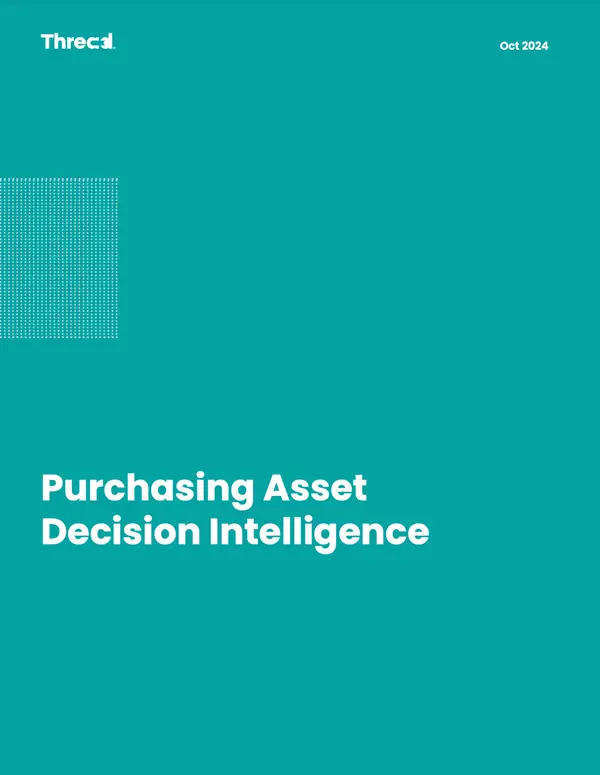The Problem with Traditional Asset Management
A big challenge for utilities today is the lack of redundancy in many systems, which is why they need an effective maintenance strategy to ensure uptime. That’s before we consider the
hundreds of thousands of assets in transmission and distribution (T&D) due to the vast network of transformers, substations, poles, meters, and cables.
Each of these components needs monitoring and maintenance. But traditional asset management strategies are limited by their time-usage based approach to maintenance. An asset manager is often restricted to a set rhythm of maintenance checks, repairs and replacements.
On occasion, parts may be replaced long before the component is truly worn down or affecting productivity. This results in unwarranted downtime as well as a miscalculation of the useful life of parts. It’s surprisingly common for an asset’s maintenance to be scheduled during a time of peak generation, resulting again in loss of productivity for the utility.
The March of APM
Data is a commodity now. Utilities are using fourth-generation APM technologies to apply a barrage of real-time data and advanced analytics to gain insights into asset health, identify potential issues, and fine-tune maintenance strategies.
The industry needs a helping hand here, as its assets create a staggering volume of data; for example, a modern combined cycle power plant (CCPP) generates up to 25 million archive entries from 50,000 signals each and every day. Making sense of that data and designing an effective condition-based game plan for maintenance is a monumental task. In T&D the signal numbers are typically
lower but still substantial. The use of advanced sensors like phasor measurement units (PMUs), generate numerous real-time signals for fault detection, voltage monitoring, and load balancing. Distribution automation (DA) and advanced metering infrastructure (AMI) technology also generates signals from thousands of devices.
The good news is that IoT sensors, machine learning (ML) algorithms, and big data analytics are enabling utilities to orchestrate a shift away from reactive maintenance to predictive maintenance of critical assets (whether that’s power plants, transmission lines, or distribution networks), which means improved asset performance and extended asset life cycles.
At last, there is a streamlined way to manage highly sophisticated processes like load forecasting, demand response management, voltage control, and distribution network optimization. In fact, the power generation sector was one of
the first adopters of APM, as industry leaders quickly saw its potential to improve grid stability and power quality.
In summary, APM pulls tactical and strategic information from enterprise asset management (EAM) systems, combining it with cost and risk data to link business objectives with business infrastructure. The outcome is improved control across your operation. Last year,
McKinsey reported on the success of a US electric utility pilot using a ML–based schedule optimizer to raise productivity by 10 to 20% (the rough equivalent of one to two scheduler hours per day), reduce job delays by 67%, reduce false truck rolls by 80%, and increase crew utilization from around 44% to 66%.
As well as enabling more efficient energy distribution, it also helps to reduce downtime. According to the Electric Power Research Institute (EPRI), the industry has achieved 5% reductions in unplanned downtime with APM, and up 22% for substations. No surprise, then, that 40% of utilities had
already fully integrated APM into their operations by last year.
Managing the Skill Gap
With so much change underway, utilities face an ever-expanding cadence of maintenance repair and tasks. A duality of purpose—the need to balance the status quo with modernization—also creates staffing challenges, with
56% of energy recruiters concerned about a severe and widening skills gap and a fast-aging demographic.
Against the background of a
chronic skills shortage, utilities struggle to train and acquire technical workers who have experience with the newer systems. That’s another reason why they are turning to APM to reinforce the capabilities of their existing workforce. Using data from multiple systems, informed decisions on service and support are possible in an instant.
What are the essential repairs that most affect productivity? Which workers are qualified to perform the job? Where are they located? Do they have the necessary tools and parts to complete the task at hand? With APM, workforce efficiencies are maximized, replacing costly old-fashioned service calls with strategic, real-time service management.
Asset Decision Intelligence (ADI): The Broader View
ADI refers to the use of new technology to enhance decision-making about asset investment, replacement, and maintenance. It allows utilities to prioritize assets based on their condition, risk of failure, and potential effects on the operation. This makes it distinct from APM, which is primarily concerned with monitoring and optimizing the performance of existing assets.
In other words, ADI takes a broader view, integrating longer-term financial, operational, and strategic considerations. One key difference between ADI and APM is that ADI evaluates not just the current state of assets but also their future performance under various theoretical but likely scenarios, helping utilities make more informed capital investment decisions.
ADI moves beyond the focus on reducing downtime and considers variables like financial risk, the criticality of assets, and regulatory compliance to guide long-term asset strategy. For example, McKinsey reported on a utility company that implemented ADI
to analyze more than 100 variables, such as age, failure history, and environmental factors, to determine which transformers were most likely to fail. This helped predict 45% of transformer failures in just 20% of the analyzed assets.
However, ADI has its own limitations. First, it requires significant amounts of high-quality data (whether that’s geographic, financial, or operational in nature) from a wide range of different systems. Integration with other technology is necessary to ensure improved model accuracy and better decision-making.
The Need for Synergy
There is clearly a need for both. Combining ADI with APM and other asset management strategies allows utilities to balance both short-term performance and long-term planning.
But there is another hurdle for electricity generators. There is a disconnect between two groups: the CIOs and the technicians and engineers. The main prerogative of the former is to satisfy the overarching business objectives, while the goal of the technicians is to complete the work urgently, keeping utility assets in the best possible working order.
It’s imperative that these two parties are on the same page for the utility to perform to its full potential. With a traditional asset management approach, this kind of alignment is hard to achieve. In the past there was no common platform enabling the relevant data to be shared and accessed right across the organization.
Thread’s proposition is a new type of Asset Management Workspace (AMW) to gather all these technologies under the same umbrella for the first time, secure but conveniently accessible through SaaS.
The Next Step
Bringing together APM and ADI involves much more than adopting new technologies; it’s about transforming the way utilities work.
Aside from the improved operational efficiency and reduced cost of maintenance, there are further vital benefits that can be gained; not least the increased profitability due to accelerated uptime. In a world where servitization, at least for now, remains the best-known and preferred business model, this can be a tremendous boost to revenue.
Finally, we should never forget that big data on its own is useless.
What comes next is the task of unlocking the data. To enable on-point data analytics, all dark data or data silos must be swiftly identified and delivered in an easily understood, standardized format. For the system to enable breakthrough moments, personnel need a fully current and accurate digital version of the utility’s operations. Thread’s mission is to provide just that.




